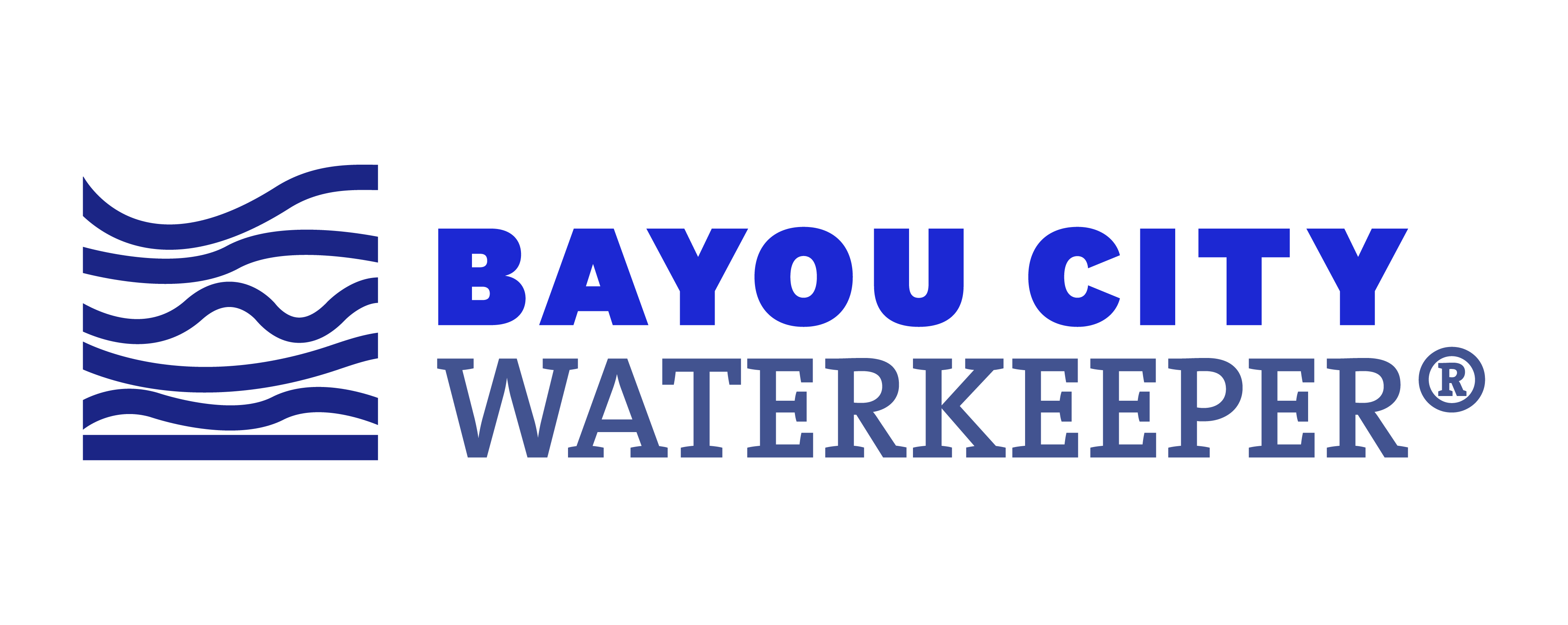[vc_row][vc_column][vc_column_text]
This is a guest post by Megan Grace, legal intern with Bayou City Waterkeeper during the fall 2020 semester.
Hurricane Harvey served as a wakeup call: for our long-term resilience, we must keep people out of harm’s way. Dumping up to 60 inches of rain in some places over an eight-day period, Harvey was the largest rainfall event recorded in U.S. history. The hurricane created a storm surge, which combined with the rain, led to widespread flooding in Houston and the surrounding communities. Over 300,000 structures in southeastern Texas were flooded. At least 160,000 structures were flooded in Houston and Galveston counties alone.
While the intensity of Hurricane Harvey can largely be attributed to climate change, the storm’s impact was exacerbated by local governments allowing development in flood zones and not properly informing residents of the risks this causes. According to the U.S. Global Change Research Program’s latest National Climate Assessment, “regional land management practices over the last several decades have reduced the area covered by wetlands, forests and prairies, which historically absorbed storm water runoff.” Development in our floodplains has altered the landscape by replacing natural environments with impermeable surfaces that make both new and existing developments more likely to flood.
As part of broader resilience strategies, local governments buy out homes in the floodplain
After Hurricane Harvey, public consensus emerged around ensuring our region’s long-term resilience. The City of Houston released its Resilient Houston strategy in February of this year. The plan articulates a vision for Houston that will thrive as more storms come our way.
The plan includes as a central strategy a buyout program to remove all habitable structures from the floodway by 2030. Before FEMA required mapping of the floodway, the City granted permits for new homes adjacent to the bayous. This led to many homes within portions of bayou floodways “where flow is concentrated and moves at high velocity, placing the homes at higher risk of flooding.”
Outside of the City of Houston, Harris County already has begun to implement the Disaster Recovery Post Disaster Relocation and Buyout Program, which is a mandatory buyout program that assists owners whose homes and businesses are located “hopelessly deep” within the 100-year floodplain and have faced repeated flooding, including during Hurricane Harvey. The structures are purchased and then demolished. The land “reverts to a natural floodplain, converts into a retention area, or is retained as green space.” Aided by a $2.5 billion bond authorized by voters in 2018, Harris County Flood Control also is implementing a large-scale buyout program to move people out of harm’s way.
Developers continue to build homes in floodplains and in the path of storm surges at a rapid pace
As the City of Houston, Harris County, and Harris County Flood Control District work to move people out of harm’s way, developers continue to build in floodplains across our watershed at an aggressive pace. As one illustration, on Follet’s Island in Brazoria County, Sand on the Floor, Inc. recently applied for a Section 404 permit to develop 45 residential lots. The project is located in a 100-year floodplain and in an ecologically sensitive coastal area that is extremely vulnerable to flooding and storm surges during storm events.
Follet’s Island is a low-lying, barrier island that is largely undeveloped and serves as the first line of defense for area communities against hurricanes. Follet’s Island is experiencing some of the highest rates of erosion of approximately 9 feet of shoreline each year. The few homes on the island faced flooding during Tropical Storm Beta. During Ike, the area endured a major storm surge. The project will impose serious flood risks for the people moving into the proposed development and may also worsen flooding for nearby communities. Yet, due to the project’s location within the Coastal Barrier Resources System, its residents will not be eligible for federally regulated flood insurance.

Barrier islands like Follet’s Island not only serve to protect coastal communities, but are also home to ecologically diverse environments that play a role in minimizing flood risks. The project will directly impact 2.5 acres of coastal wetlands but may have broader impacts on more than 60 acres of coastal wetlands. Coastal wetlands serve as a natural barrier to protect inland areas by mitigating impacts of storms, erosion, and sea-level rise on coastal communities. Follet’s Island also provides nesting habitat for threatened and endangered sea turtles, including Kemp’s ridley sea turtles, as well as foraging and roosting habitat for a number of shorebirds, including the wintering piping plover and red knot, both threatened species.
This is one example of many. Developments within the floodplains, over wetlands that otherwise would protect communities from flooding, are ongoing across the watershed, including in Katy, Kingwood, League City, and Hitchcock.
Bayou City Waterkeeper works everyday to protect wetland habitats and keep people out of harm’s way
Using law and science, Bayou City Waterkeeper collaborates with communities to push back against irresponsible development, fill gaps in enforcement, and build community power. Earlier this fall, Bayou City Waterkeeper submitted comment letters to the Army Corps of Engineers and General Land Office, highlighting the dangers the Sand on Floor development will have to the environment and nearby coastal communities.
Bayou City Waterkeeper also recently filed a lawsuit against the Army Corps for allowing development to proceed over forested wetlands in the 100-year floodplain in League City, without requiring any form of mitigation. Bayou City Waterkeeper also has been working with a resident in Hitchcock to require more vigorous environmental review by the Army Corps over a low-income housing development being built over forested wetlands in the 100-year floodplain. Despite seeming to place future residents in harm’s way, the Hitchcock development is being funded by millions of disaster recovery funds managed by the Texas General Land Office.
Bayou City Waterkeeper also has helped establish Harris County’s Community Flood Resilience Task Force to promote collaboration with communities and encourage equitable resilience planning efforts and flood resilience projects; Executive Director Jordan Macha is serving as a voting member of the Texas Water Development Board’s Regional Flood Planning Group for the Trinity Watershed; and the organization continues to advocate for nature-based solutions to flooding. Through strategic collaborations and advocacy in communities across the Galveston Bay watershed, Bayou City Waterkeeper is pushing for local, state, and federal funds directed at our resilience to be spent wisely on science-based, future-oriented, equitable solutions that work with – not against – nature. All our communities, whether in Houston’s urban core or along our beautiful stretch of the Gulf Coast, deserve the promise of a resilient and healthy environment for generations to come.
If you have questions or concerns about developments in the floodplains or affecting wetlands in your community, please email Bayou City Waterkeeper at info@bayoucitywaterkeeper.org.
 Megan Grace is a third-year law student at the University of Houston Law Center. Originally from Dalton, Massachusetts, Megan graduated with a Bachelor’s degree from Siena College in 2016 with a major in political science and a minor in environmental studies. During her time at Siena, Megan was a member of the NCAA Division I women’s swimming and diving team. Before joining Bayou City Waterkeeper, Megan interned with Texas Commission on Environmental Quality and Galveston Bay Foundation. After law school, Megan plans to pursue a legal career in coastal and water protection. [/vc_column_text][/vc_column][/vc_row]
Megan Grace is a third-year law student at the University of Houston Law Center. Originally from Dalton, Massachusetts, Megan graduated with a Bachelor’s degree from Siena College in 2016 with a major in political science and a minor in environmental studies. During her time at Siena, Megan was a member of the NCAA Division I women’s swimming and diving team. Before joining Bayou City Waterkeeper, Megan interned with Texas Commission on Environmental Quality and Galveston Bay Foundation. After law school, Megan plans to pursue a legal career in coastal and water protection. [/vc_column_text][/vc_column][/vc_row]
